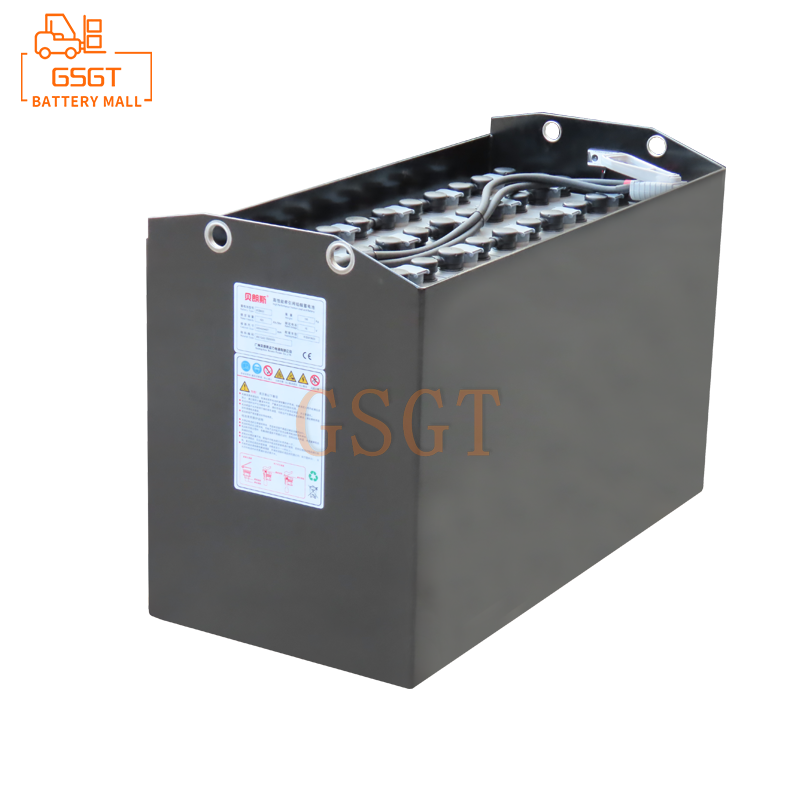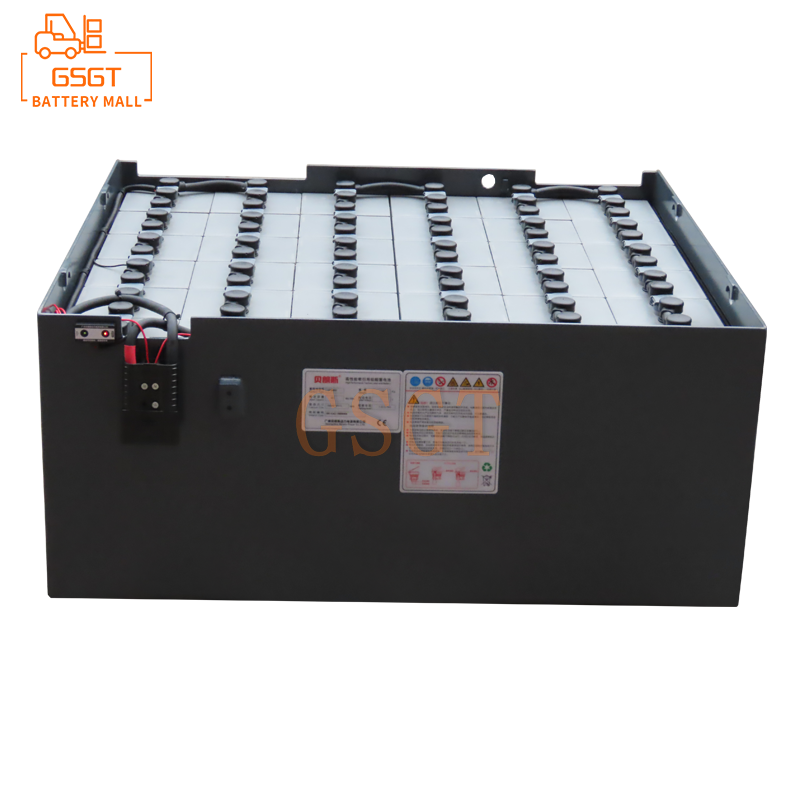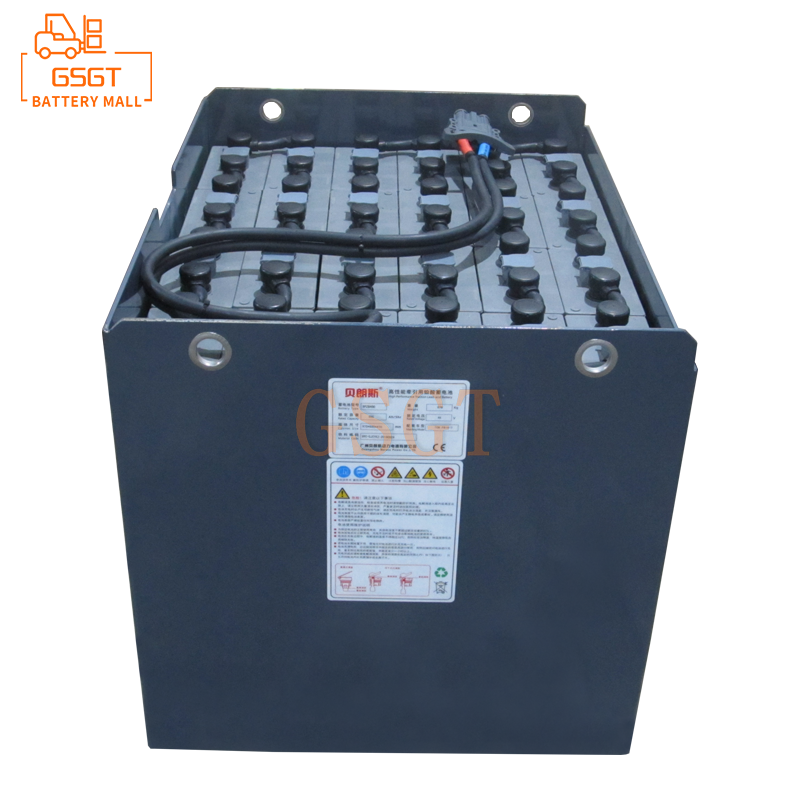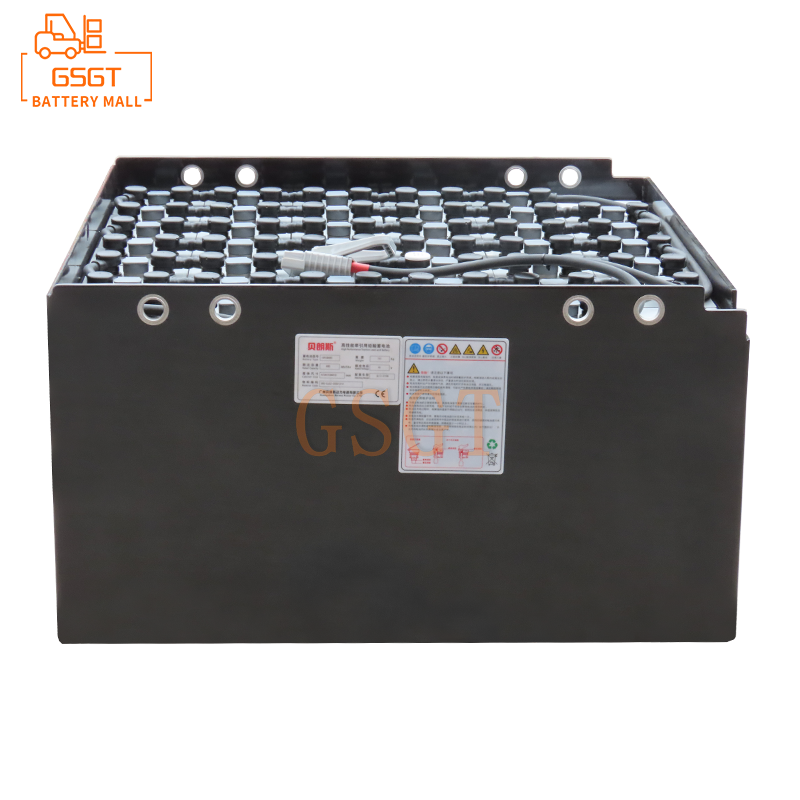Time:2025-05-07 15:00:44
Browse:625
In the modern logistics and warehousing field, forklifts, as important handling equipment, the performance of their power source, lead-acid batteries, directly affects the working efficiency and operating costs of forklifts. Lead-acid batteries occupy an important position in the power system of forklifts due to their advantages such as mature technology, low cost and high safety. However, as the usage time increases and the work intensity grows, its performance may gradually decline. To ensure the continuous and efficient operation of forklifts, improving the performance of lead-acid batteries becomes crucial. The following are some practical suggestions aimed at helping enterprises and operators better maintain and improve the performance of lead-acid batteries in forklifts.
1. Correct Charging Management
(1) Seizing the right moment to charge
Avoid excessive discharge: Excessive discharge of lead-acid batteries can cause irreversible damage to the plates and significantly shorten the battery's lifespan. Generally speaking, when the battery voltage drops to about 80% to 85% of the rated voltage, it should be charged in time. Operators should closely monitor the battery level display on the forklift's dashboard and promptly arrange for charging to prevent excessive battery discharge.
2. Avoid shallow charging and discharging: Although it is important to avoid excessive discharging, shallow charging and discharging should not be performed frequently either. If the battery is charged every time when the power consumption is very low, it will cause the active substances on the battery plates to fall off prematurely, affecting the battery performance. It is recommended that the depth of battery discharge be between 30% and 80% before each charge, which is more appropriate.
(2) Select the appropriate charging equipment and charging mode
1. Matching chargers: Different specifications and models of lead-acid batteries require chargers that match them. The output voltage and current parameters of the charger must be consistent with the rated parameters of the battery. For instance, for a lead-acid battery with a capacity of 500Ah, a charger with an output current ranging from 50 to 100A should be selected to ensure a reasonable charging speed and effect. If an unmatched charger is used, it may lead to undercharging or overcharging, seriously damaging the battery.
2. Three-stage charging mode: It adopts a three-stage charging mode, namely constant current charging, constant voltage charging and float charging. During the constant current charging stage, charging the battery rapidly with a large constant current can enable the battery to reach a certain level of power in a relatively short time. When the battery voltage rises to the set constant voltage value, it enters the constant voltage charging stage. At this time, the current gradually decreases and continues to recharge the battery. Finally, it enters the float charging stage, maintaining the battery's full charge state with a relatively small current to prevent the battery from self-discharging and causing a decrease in power. This charging mode can not only improve the charging efficiency but also extend the battery life.
(3) Control the charging environment and time
1. Appropriate charging temperature: The optimal charging temperature for lead-acid batteries is around 25℃. Both excessively high and low temperatures can affect the charging effect and battery performance. When the ambient temperature exceeds 35℃, the chemical reactions inside the battery intensify during the charging process, generating excessive heat and leading to problems such as battery water loss and plate deformation. When the temperature drops below 5℃, the chemical reaction rate of the battery slows down and its charging acceptance capacity decreases, which may result in insufficient charging. Therefore, the battery should be charged as much as possible in a suitable temperature environment. If the conditions cannot be met, a temperature control device can be used to adjust the charging environment.
2. Reasonably control the charging time: Each charging time should not be too long or too short. Generally speaking, for a fully discharged battery, a charging time of about 8 to 10 hours is more appropriate. Excessively long charging time can lead to overcharging of the battery, generating a large amount of gas and heat, and accelerating the aging of the battery. If the charging time is too short, the battery will not be fully charged, affecting its battery life during the next use. During the charging process, one can determine whether the charging is complete by observing the changes in the battery's charging current, voltage and temperature.
2. Scientific Daily Use and Maintenance
(1) Operate forklifts in a standardized manner
Smooth start-up and acceleration: When starting the forklift, it should be accelerated slowly to avoid sudden large current discharge. Instantaneous high-current discharge can cause a significant impact on the battery plates, accelerating the shedding of active substances on the plates. Smooth start-up and acceleration can make the battery current output more stable and extend the battery's service life.
2. Avoid sudden braking and frequent steering: Sudden braking and frequent steering will increase the energy consumption of the forklift, causing unstable battery discharge current. In actual operation, the operator should plan the driving route in advance, try to avoid unnecessary sudden braking and frequent steering, so as to reduce the energy loss of the battery and maintain its performance.
(2) Regularly inspect and maintain the battery
1. Check the electrolyte level: During the use of lead-acid batteries, the electrolyte will decrease due to evaporation and chemical reactions. It is crucial to check the electrolyte level regularly, usually once a week. When the liquid level is below the minimum scale line, distilled water or special lead-acid battery replenishment fluid should be added to keep the liquid level within the specified range. It should be noted that tap water must not be added as it contains various impurities that can affect the performance and lifespan of the battery.
2. Test the density of the electrolyte: The density of the electrolyte reflects the charging state of the battery and the concentration of the electrolyte. The density of the electrolyte should be tested regularly with a hydrometer, usually once a month. Under normal circumstances, the density of the electrolyte should be between 1.28g/cm³ at 25℃. If the density is too high or too low, it indicates that the battery has problems such as undercharging or overcharging, and it is necessary to adjust the charging strategy in time or maintain the battery.
3. Clean the battery surface: Dust, dirt and electrolyte spills on the battery surface may cause an increase in battery self-discharge. Regularly clean the battery surface with a clean damp cloth to remove dust and dirt and prevent oxidation of the battery terminals and connecting wires. At the same time, check whether the connection of the battery terminals is firm. If it is loose, tighten it in time to ensure good electrical connection and reduce resistance loss.
(3) Balanced battery pack
In the lead-acid battery pack of forklifts, due to the performance differences of each individual battery cell, an imbalance may occur during use. Long-term imbalance will lead to overuse of some battery cells while underuse of others, thereby affecting the performance and lifespan of the entire battery pack. Regular equalization charging of the battery pack can effectively solve this problem. Equalization charging is generally carried out once every 2 to 3 months. Through dedicated equalization equipment, the voltage and capacity of each individual battery in the battery pack are made as consistent as possible, thereby enhancing the overall performance of the battery pack.
3. Reasonable Storage and Maintenance
(1) Short-term storage
If the lead-acid battery of the forklift needs to be stored for a short period (1-3 months), it should be fully charged first, and then recharged every half a month to prevent the battery from self-discharging and causing the power to be too low. The storage environment should be kept dry and well-ventilated, with a temperature ranging from 5℃ to 35℃. It should be protected from direct sunlight and corrosive gases.
(2) Long-term storage
For batteries that have been stored for a long time (more than 3 months), a complete discharge should be carried out first, followed by a deep charge. Then, the density of the battery's electrolyte should be adjusted to between 1.28g/cm³, and some of the electrolyte should be drained to make the liquid level level with the plates. Store the battery in a dry, cool and well-ventilated environment and recharge it once a month. Before reusing the battery, it is necessary to first check the electrolyte level and density, add an appropriate amount of distilled water or supplementary liquid, adjust the electrolyte density to the normal range, and then carry out a complete charging process.
4. Technological Upgrading and Innovative Application
(1) Install a battery management system
The battery management system can monitor parameters such as voltage, current, temperature, and charging and discharging status of the battery in real time. Through data analysis and algorithm optimization, it realizes intelligent management of the battery. It can promptly detect problems with the battery, such as overcharging, overdischarging, abnormal temperature, etc., and issue an alarm to remind the operator to take corresponding measures.
(2) Use new types of additives
There are some new types of additives for lead-acid batteries on the market, such as nano-carbon additives and organic polymer additives. These additives can improve the active material structure of the battery plates, enhance the charging and discharging performance of the battery, increase the battery's anti-sulfation ability, reduce the corrosion and aging of the plates, and thereby improve the overall performance and service life of the battery. When using additives, operations should be carried out strictly in accordance with the product instructions to ensure safety and effectiveness.
To enhance the performance of lead-acid batteries in forklifts, efforts should be made in multiple aspects, including charging management, daily use and maintenance, storage and care, as well as technological upgrades. Through correct operation and scientific management, the service life of batteries can be effectively prolonged, the working efficiency of forklifts can be improved, the operating costs of enterprises can be reduced, and a strong guarantee can be provided for the efficient operation of the logistics and warehousing industry. Enterprises and operators should attach great importance to the performance improvement of lead-acid batteries, and apply these practical suggestions to actual work in a practical way to achieve a dual improvement in economic benefits and equipment performance.

$2450

$4045

$3130

$5710

MESSAGE
Professional And Efficient
Security
Affordable Price
Professional Services